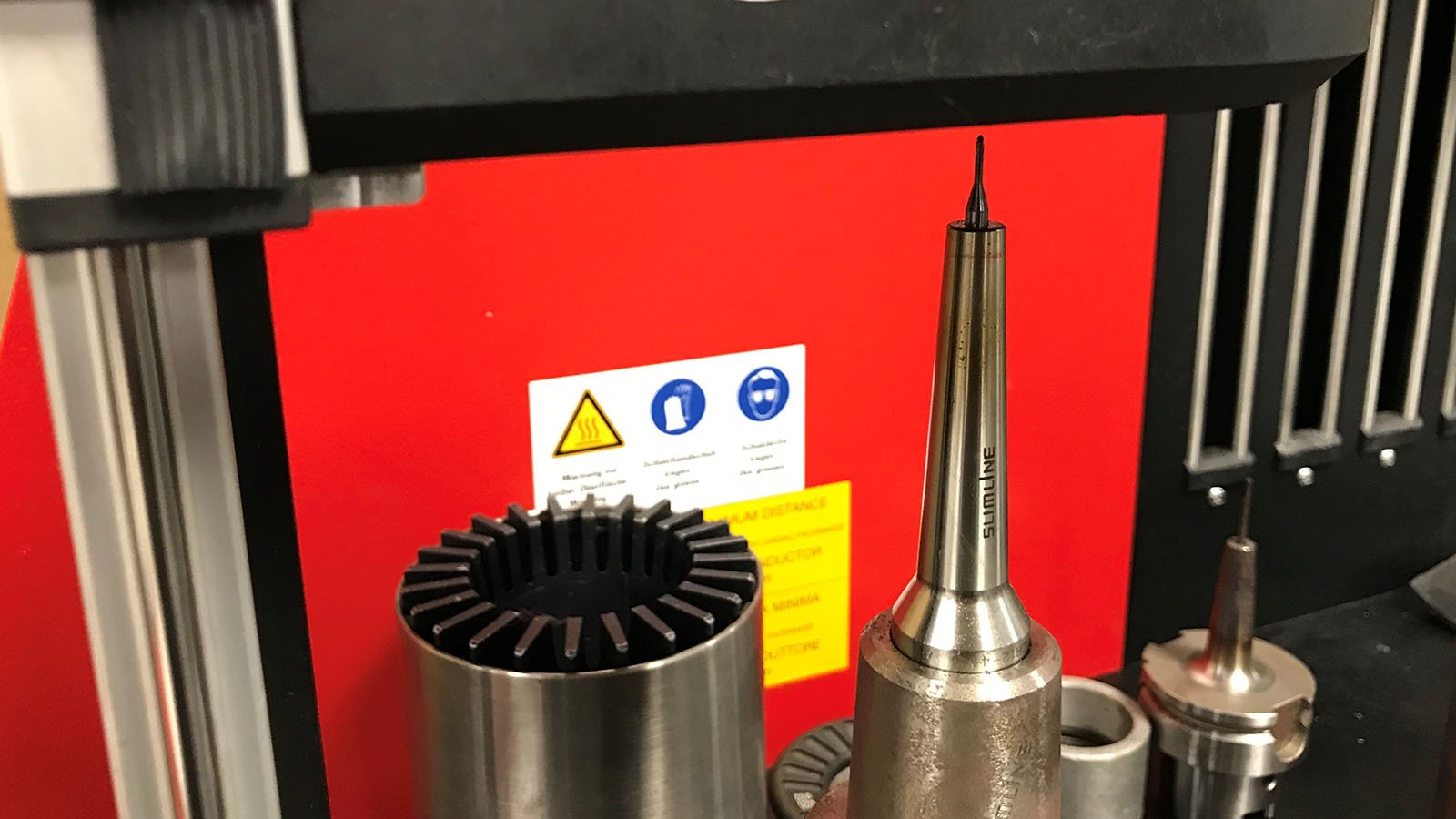Nearly all of our CNC machining operations use shrink-fit tooling. We’ve found over the years that there is just no comparison to the accuracy and tool life achieved using shrink-fit tooling. So what is shrink-fit tooling and what does it mean for our customers?
The interface between the spindle of the CNC machine and the tooling is known as the tool holder. There are several different styles of tool holding for the various operations that go from the classic key chuck you’d find on your cordless drill to shrink fit tooling. There is a place for each in the industry, but most operations can utilize shrink-fit tooling.
The advantages of this type of tool holding are concentricity, balance, rigidity, and tool life. If you’ve ever been in a car with a slightly off-balance wheel, you can see where this is going. Tooling concentricity (runout) is measured by spinning a tool around and checking how much the tool moves off-center as it spins. When tooling has excessive run out, a few things are happening.
Since the tooling is spinning out of round, it is effectively cutting everything undersize. As it’s spinning, the tooling is moving towards and away from the cutting surface (assuming the cutting surface is not perpendicular to the spindle). If high accuracy is required, the operator may need to make a few finish passes and adjust the offset as needed the compensate for this.
Excessive runout can also limit machine rpm and therefore limit cutting speed. Each type of tool holding has its limit, but having a bad tooling interface or trying to push a certain tool holder beyond recommendation is not a good idea. Above recommended rpm range small vibrations (hopefully not large) are passing throughout the machine. This can cause a bad surface finish and excessive wear on the equipment. This is where another important aspect of shrink fit tooling comes in, rigidity.
The design of other tool holding has three or more contact points to hold a particular tool. The more contact area a tool holder has, the more rigid it will be. For shrink-fit tooling, the entire circumference of the tool is being held, extremely tight. The premise of shrink-fit tooling is that each tool holder has a precise hole for a specific sized tooling.
The end of the tool holder is rapidly heated to grow the metal and open the hole up. The tooling is inserted into place, and then the tool holder is cooled, shrinking the metal back, and clamping onto the tooling. Induction heaters are typically used for heating the end of the tool rapidly.
This is all great for the machinist but what does it mean for the customer? When we can produce higher quality tools, faster, and with fewer consumables, everyone wins. This system gives us the utmost confidence that our tooling is performing at its best and will cut accurately the first time. This helps to reduce overall leads times and reduce overhead by cutting components quickly and accurately with less tool wear.


